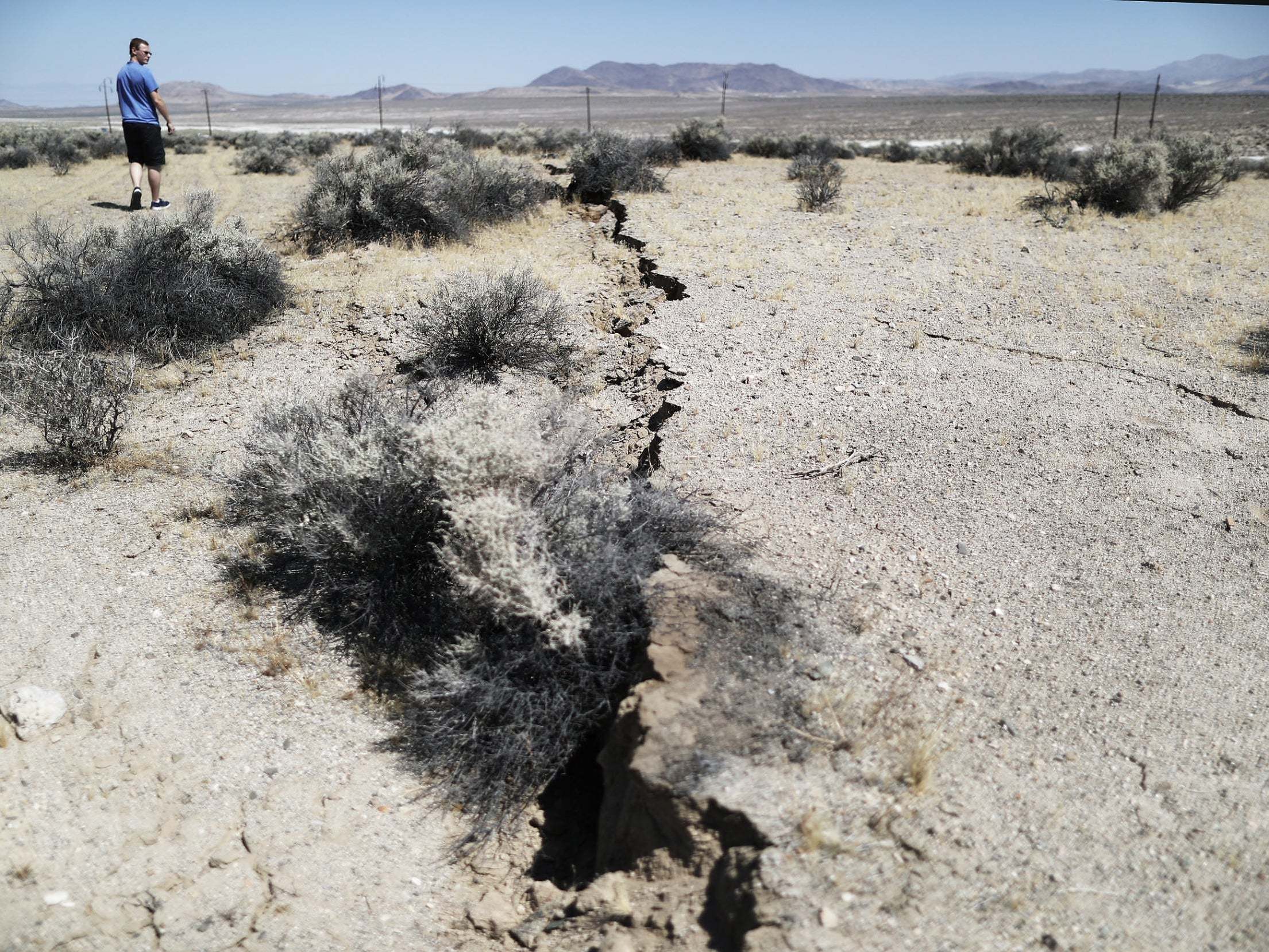Earthquakes repeatedly striking proposed US nuclear waste site
Officials fear deadly radioactivity could seep into earth if another high-magnitude quake strikes Nevada desert

Your support helps us to tell the story
From reproductive rights to climate change to Big Tech, The Independent is on the ground when the story is developing. Whether it's investigating the financials of Elon Musk's pro-Trump PAC or producing our latest documentary, 'The A Word', which shines a light on the American women fighting for reproductive rights, we know how important it is to parse out the facts from the messaging.
At such a critical moment in US history, we need reporters on the ground. Your donation allows us to keep sending journalists to speak to both sides of the story.
The Independent is trusted by Americans across the entire political spectrum. And unlike many other quality news outlets, we choose not to lock Americans out of our reporting and analysis with paywalls. We believe quality journalism should be available to everyone, paid for by those who can afford it.
Your support makes all the difference.Repeated earthquakes could risk releasing deadly radioactivity into the earth if plans for a nuclear waste site in go ahead in Nevada’s desert, the state’s governor has warned.
Tens of thousands of tons of highly radioactive used nuclear reactor fuel are due to be transferred from 35 US states to a new facility in the Mojave Desert.
The Yuka Mountain nuclear waste repository is set to store this material deep within the earth.
But a series of recent earthquakes in the Mojave Desert has raised concerns about the safety of storing radioactive waste at the facility.
On 4 July, a 7.1 magnitude earthquake ruptured the earth in the desert, which stretches across the California-Nevada border.
The force of the quake cracked buildings, sparked fires, damaged roads and caused several injuries in southern California. It was followed by a 6.4-magnitude temblor two days later.
In the wake of the earthquakes, the governor of Nevada Steve Sisolak said he was committed to “fighting any continued federal effort to use Nevada as the nation's nuclear dumping ground".
“These significant recent earthquakes so near to Yucca Mountain show one of the many geologic problems with the site as a nuclear waste repository,” he said.
Mr Sisolak sent a letter to the energy secretary, Rick Perry, urging him to reconsider the location of the facility.
The US government began considering sites for storing radioactive waste that is produced as old nuclear fuel is reprocessed into nuclear weapon materials in 1982.
In 2002, Yuka Mountain was designated as the only site in the country to receive the radioactive material.
But Nevada has fought the proposed nuclear waste repository at every step, arguing that US government studies downplayed the risk of earthquakes damaging the repository and releasing deadly radioactivity.
The project was shelved in 2010 under pressure from then-Senate Democratic Majority Leader Harry Reid of Nevada and Barack Obama. They said nuclear waste should be stored in a state that wants it.
But in March 2019, Mr Perry, the Trump administration's energy secretary, set aside $116m to push forward the project and restart licensing hearings.
In governor of Nevada’s letter to Mr Perry, he included the opinions of James Faulds at the Nevada Bureau of Mines and Geology and Graham Kent at the seismological laboratory at the University of Nevada.
They urged for more research to be conducted into the seismic activity at the Yuka Mountain site. "The Ridgecrest earthquake sequence, which began July 4 and has yet to subside, clearly highlights the importance of such studies," Mr Faulds and Mr Kent said.
A recent ranking compiled by the US Geological Survey found Nevada was the US state with the fourth highest level of seismic activity after Alaska, Wyoming and Oklahoma.
Additional reporting by AP
Join our commenting forum
Join thought-provoking conversations, follow other Independent readers and see their replies
Comments